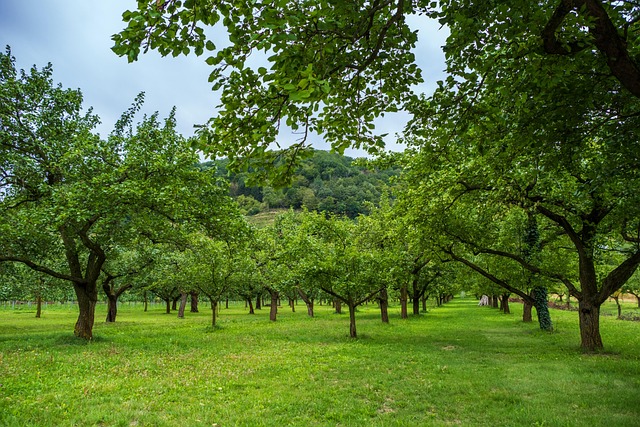Identifying and treating tree diseases is crucial for maintaining landscape health. Plano, TX tree surgeons use visual inspections, tools, and tests to diagnose issues like oak wilt, root rot, and powdery mildew. They provide expert care, including pruning, treatments, and maintenance, to ensure tree longevity. Post-surgery cleanup and adjustments further promote safe, vibrant landscapes. Trust Tree Surgeon Plano TX professionals for optimal tree health.
In the vibrant landscape of Plano, TX, maintaining the health of your trees is crucial for a lush and thriving yard. This guide delves into the essential aspects of recognizing diseased trees, highlighting the vital role a professional Tree Surgeon Plano TX plays in effective management. From identifying common tree maladies to restorative post-surgery practices, this comprehensive overview equips homeowners with knowledge to ensure their trees flourish.
- Identifying Diseased Trees in Plano, TX
- The Role of a Professional Tree Surgeon
- Common Diseases Affecting Local Trees
- Evaluating Tree Health: Symptoms to Watch For
- Effective Treatment and Management Strategies
- Restoring Your Yard After Tree Surgery
Identifying Diseased Trees in Plano, TX

Identifying diseased trees is a critical skill for any tree surgeon in Plano, TX. The first step involves conducting a thorough visual inspection, looking for signs such as discolored or missing leaves, abnormal growths, and cankers—all potential indicators of illness or infestation. A tree surgeon will also assess the tree’s overall health, taking note of its vigor and vitality.
Additional tools like bark scraping and soil testing can provide more concrete evidence of disease. Bark scraping helps identify fungal infections by revealing microscopic changes beneath the surface. Soil testing is crucial as it checks nutrient levels and pH balance, which play a significant role in a tree’s ability to fight off diseases. By combining these methods, a qualified Tree Surgeon Plano TX can accurately diagnose and treat diseased trees, ensuring their longevity and beauty for years to come.
The Role of a Professional Tree Surgeon

A professional tree surgeon in Plano, TX, plays a crucial role in maintaining the health and safety of local landscapes. These experts are equipped with the knowledge and skills to assess, diagnose, and treat various tree-related issues, from disease and insect infestations to structural weaknesses and damage caused by storms.
When trees become diseased or distressed, timely intervention is essential. Tree surgeons employ specialized techniques and tools to prune away affected branches, prevent the spread of diseases, and promote healing. They also have access to a range of treatments, including fungicides and insecticides, to combat specific problems effectively. By calling in a professional tree surgeon, Plano TX residents can ensure their trees receive the care they need to thrive while minimizing risks to property and safety.
Common Diseases Affecting Local Trees

In the vibrant landscape of Plano, TX, where bustling streets and thriving neighborhoods meet, local trees face various challenges. Among the most common diseases affecting these green giants are oak wilt, a fungal infection that weakens and eventually kills oak trees, and Dutch elm disease, caused by a fungus transmitted through elm bark beetles. These conditions can lead to wilting, defoliation, and even death if left untreated.
Another prevalent issue is root rot, often occurring due to overwatering or poor drainage, which chokes the tree’s vital roots, hindering its ability to absorb water and nutrients. In addition, powdery mildew, a fungal growth that appears as white dust on leaves, can debilitate trees and contribute to their overall decline. A qualified Tree Surgeon Plano TX professionals are equipped to diagnose and treat these diseases, ensuring the longevity and health of our city’s beloved trees.
Evaluating Tree Health: Symptoms to Watch For

Evaluating a tree’s health is crucial for any Tree Surgeon Plano TX professional. By understanding the subtle signs, one can effectively diagnose potential issues early on. Symptoms may include discolored or wilting leaves, unusual growth patterns, or branches that appear dead or decaying. These visual cues often indicate underlying problems like pest infestations, disease, or nutrient deficiencies.
Additionally, checking for structural weaknesses, such as split trunks, loose limbs, or abnormal branching, is essential. Tree Surgeon Plano TX experts also consider the tree’s overall vigor, growth rate, and historical performance against common pests and diseases in the area. Regular inspections enable proactive care, ensuring the long-term health and longevity of your trees.
Effective Treatment and Management Strategies

When dealing with a diseased tree, a qualified Tree Surgeon Plano TX is essential for effective treatment and management. The first step involves identifying the specific disease or pest infestation affecting the tree. Common issues include bacterial infections, fungal diseases, insect infestations, and nutrient deficiencies. Once diagnosed, professionals can employ targeted strategies to mitigate the problem. This may include pruning infected branches, applying appropriate fungicides or pesticides, or providing targeted fertilization to restore the tree’s health.
Regular maintenance plays a crucial role in preventing future outbreaks. A Tree Surgeon Plano TX expert can provide recommendations for proper watering, mulching, and structural pruning to strengthen trees against diseases and pests. By implementing these strategies, homeowners can ensure their trees remain robust and vibrant, enhancing the overall aesthetics and health of their landscapes.
Restoring Your Yard After Tree Surgery

After a tree surgery procedure, restoring your yard is an essential step in maintaining a healthy and aesthetically pleasing outdoor space. A Tree Surgeon Plano TX professional can guide you through this process, ensuring proper healing and regrowth. The first step is to remove all debris left behind from the surgery, including branches, leaves, and any tools used. This not only improves the overall look of your yard but also prevents potential safety hazards.
Once the area is cleared, it’s crucial to properly dispose of the removed tree parts. Many tree surgeons offer this service or can recommend local recycling centers that accept organic waste. With the debris out of the way, assess the remaining landscape and decide on any necessary adjustments. This might include trimming neighboring trees for better air circulation or reshaping the lawn to accommodate the newly exposed space. By taking these steps, you’ll be well on your way to revitalizing your yard and ensuring the health of your trees in Plano, TX.
When dealing with diseased trees in Plano, TX, it’s clear that a professional tree surgeon is an indispensable asset. Throughout this article, we’ve explored the importance of identifying tree health issues early, from common diseases to symptoms requiring attention. By understanding these signs, homeowners can effectively manage and treat affected trees or make informed decisions regarding tree surgery. With the right approach, restoring your yard to its lush best is within reach, ensuring your trees thrive for years to come. For expert assistance, consider a reputable Tree Surgeon Plano TX has to offer.






